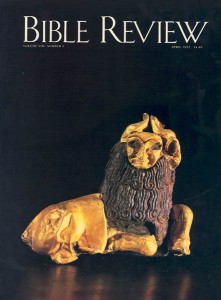To the uninitiated, the Bible is the Bible. To get one, you go to a bookstore and ask for a Bible. Readers of BR know better. The English-speaking student of the Bible is blessed with dozens of translations in hundreds of editions. What distinguishes them one from another?
Content
While we regularly speak of the Bible, in reality there are several different, but related, Bibles. The Jewish Bible consists of the 24 books of the Hebrew Scriptures, called the Tanakh, an acronym for its three divisions—Torah (the Law, also called the five books of Moses or the Pentateuch), Nevi’im (the Prophets) and Ketuvim (Writings). These books and several others—among them Judith, 1-4 Maccabees and Wisdom of Ben Sirach (or Ecclesiasticus)—were collected in a third century B.C. Greek translation known as the Septuagint (Seventy), after its legendary 72 translators.a The text, names and order of the books in the Septuagint differ from the Hebrew version. For example, the Hebrew books of Samuel and of Kings correspond to 1–4 Kings in the Septuagint.
Christian Bibles contain all or most of the books of the Jewish Greek Bible—called the Old Testament (OT) by Christians—plus the New Testament (NT). The Catholic OT, as in the revered Douay Bible or the modern Jerusalem Bible, includes all the books of the Septuagint. The OT of the Eastern Orthodox churches contains the Hebrew Scriptures and some of the additional books of the Septuagint. The Protestant OT is limited to the 24 books of the Hebrew Scriptures, arranged, however, in the same order as in the Septuagint.
Already a library member? Log in here.
Institution user? Log in with your IP address.

